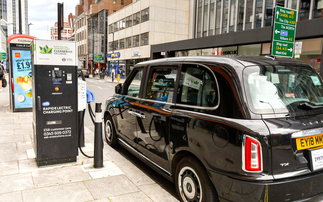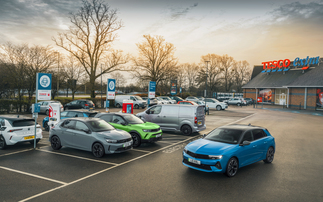iStock
UN agency calls on countries to collaborate on standards that enhance emissions standards for second-hand trucks shipped to developing nations
Heavy duty vehicles (HDVs) may represent just 3.6 per cent of the automotive market's total value, but they are responsible for an outsized chunk of the road transport sector's emissions.
That is according to a report this morning from the United Nations Environment Programme, which looks at the impact trucks, buses, and other HDVs are having on air pollution, road accidents, fuel consumption, and climate change.
The report reveals how HDVs account for more than 40 per cent of on-road nitrogen oxides, more than 60 per cent of on-road particulate matter, and more than 20 per cent of black carbon emissions.
It also warns that carbon dioxide emissions from HDVs have increased by 30 per cent since 2000, as the number of trucks, buses, and other large vehicles have surged around the world. Trucks contributed to 80 per cent of the increase in the HDV market's emissions, according to the research.
A number of industrialised economies, including the UK and the EU, have set targets to phase out the sale of new internal combustion engine HDVs by the 2040s in a bid to drive demand for emerging electric and hydrogen models that promise to slash emissions from the sector.
But the report highlights how used HDVs are routinely shipped to developing economies where they continue to pollute. The report calls for more robust regulation and enforcement mechanisms for HDV exports, warning that old, polluting, and unsafe second-hand HDVs are damaging people's health and fuelling the climate crisis in developing countries.
UNEP said importing and exporting countries had a "shared responsibility" to ensure cleaner and safer used vehicles were on the roads in low- and middle-income countries.
The research notes that regulations in more than half of countries which import HDVs are "weak" or "very weak" and enforcement is often inadequate. Meanwhile, no exporting country has minimum requirements for the used HDVs they ship abroad.
"Trucks and buses contribute to economic growth just about anywhere in the world, but ambitious regulations are needed to curb their emissions causing major environment and health impacts," said Rob de Jong, head of UNEP's sustainable mobility unit. "Introduction of cleaner bus technologies can be a major driver for the global revolution to low and, ultimately, zero emissions transport."
Twenty-five African countries have proposed standards for used HDVs in a bid to tackle air pollution, curb carbon emissions, and improve road safety, but only four have fully implemented these rules, according to UNEP.
Meanwhile, just two countries have included used vehicles in their climate action plans - or Nationally Determined Contributions (NDCs) in the UN jargon - which are submitted under the Paris Agreement.
To reach their conclusions, the researchers looked at export data from three major HDV exporters - Japan, the EU, and the Republic of Korea - to 146 predominantly low and middle- income countries.
The UN agency said the report represented the first attempt to quantify HDV flows around the world. However, it cautioned there were "limitations" to its research, given a lack of publicly available data or discrepancies in statistics from the US and China, two major exporters of HDVs.
The study comes just a week after sales data published by the UK's automotive body the SMMT noted that nearly half of buses sold in the UK in 2023 were zero-emission, with the UK now Europe's largest green bus market.
Progress in decarbonising the UK's truck market remains slower, however, with the SMMT confirming that zero emission vehicles represented just 0.5 per cent of the new truck market in 2023.
Keep up to date with all the latest green business news by signing up to the free Daily and Weekly BusinessGreen Newsletters.











